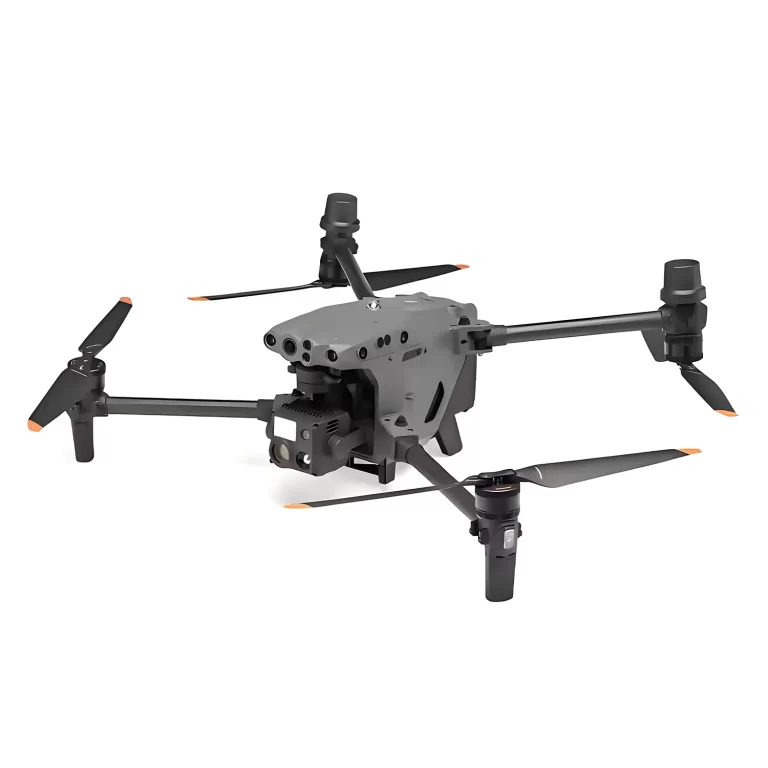Home » Vertical Fire Suppression UAV
Vertical Fire Suppression UAV
The Vertical Fire Suppression UAV is a modular multirotor drone system engineered for precision aerial fire suppression through vertical payload delivery. Designed to support wildland, urban high-rise, and industrial fire response, it enables unmanned, direct intervention in areas inaccessible or unsafe for personnel.
With a payload capacity up to 100 kg (220 lbs) and flight endurance up to 60 minutes (no payload), the UAV can deliver targeted suppression projectiles or liquid-based retardant pods with precision. The system is operated under FAA Part 107 regulations and aligned with NFPA 1906 wildland suppression principles and ASTM F3266/F3548 UAV operational standards, ensuring compliance and traceability for professional fire agencies and OEM integration projects.
The Vertical Fire Suppression UAV provides a new operational layer between ground response and manned aerial assets. Its servo-actuated multi-tube launcher deploys up to four 25 kg (55 lbs) suppression projectiles, each containing encapsulated dry chemical or fire-retardant gel. Tested under controlled conditions, the system achieves impact dispersion with ≤ 150 ms response time and controlled coverage within defined radius parameters.
The UAV integrates dual-mode flight control—autonomous waypoint navigation via GPS and manual joystick control for dynamic targeting. Operators can switch between semi-automated release sequences and manual control during critical missions.
Payload modules include thermal imaging, infrared detection, and real-time 1080p video transmission (< 150 ms latency) via encrypted LTE or mesh links, providing live situational awareness to incident command centers. The aircraft structure—carbon fiber and aerospace-grade aluminum alloy—ensures high stiffness-to-weight ratio, resisting deformation and maintaining stability in Beaufort 6 winds (39–49 km/h) and temperatures −10 °C to +50 °C (14 °F to 122 °F).
Endurance is optimized by adaptive load management:
≤ 100 kg payload → 25–30 minutes endurance
≤ 50 kg payload → 40–45 minutes endurance
No payload → up to 60 minutes endurance
The UAV’s flight system incorporates redundant propulsion, dual IMU stabilization, and failsafe return-to-home logic. Control range extends to 100 km (62 mi) under relay or mesh network operation, while remaining compliant with FAA Part 107 visual-line-of-sight (VLOS) limitations for domestic missions.
The onboard Battery Management System (BMS) and UL-recognized electrical modules provide real-time thermal monitoring, overcurrent protection, and voltage balancing. A low-voltage auto-landing sequence ensures safe descent under emergency power conditions. The payload release trigger includes a mechanical interlock and dual-authorization logic, preventing accidental discharge during flight or maintenance.
Maintenance is minimized through modular component architecture—rotor arms, propulsion units, and payload pods can be replaced within 15 minutes on-site. Battery packs are rated for 500 charge cycles, with recommended quarterly diagnostics via the integrated Poseidon maintenance console.
Precision Fire Suppression – Deploys targeted fire-retardant projectiles or gel pods with < 1 m deviation accuracy.
Heavy-Lift Capability – Carries up to 100 kg (220 lbs) payload with endurance-scaled flight time.
Dual-Mode Navigation – Supports GPS waypoint routing, manual control, and semi-automated firing sequences.
Real-Time Intelligence – Thermal imaging, IR detection, and live encrypted HD streaming enhance command decisions.
All-Weather Operation – Stable in Beaufort 6 winds; functions −10 °C to +50 °C with IP54-rated structure.
Safety-First Design – Redundant IMU, fail-safe protocols, and dual interlock trigger prevent accidents.
SCADA & OEM Integration – Compatible with industrial telemetry; customizable payload bay for OEM adaptation.
Regulatory Alignment – Operated under FAA Part 107; designed per NFPA 1906 and ASTM F3266/F3548 UAV standards.
Wildland & Forest Fire Response – Rapid aerial deployment of fire-retardant payloads to unreachable hotspots.
Urban High-Rise Fires – Vertical suppression through upper-story access where ground ladders cannot reach.
Industrial & Oil Facility Fires – Safe unmanned response near hazardous zones or tank fires.
Remote Infrastructure Protection – Supports wind farms, substations, and remote power stations requiring fast-response coverage.
Aviation & Defense Operations – Optional integration with tactical control networks for field deployment exercises.
This UAV is intended for professional use by authorized agencies or licensed operators under applicable aviation and fire safety regulations.
| Parameter | Specification | Standard / Notes |
| Type | Multirotor UAV for vertical fire suppression | – |
| Payload Capacity | Up to 100 kg (220 lbs) | Modular load bay |
| Flight Endurance | Up to 60 min (no load); 25–30 min at full load | Environmental dependent |
| Suppression Mechanism | 4 × 25 kg projectiles / liquid pods | Servo-actuated vertical launcher |
| Navigation Modes | GPS Waypoint / Manual / Semi-Auto | Dual-mode |
| Video Transmission | 1080p HD, < 150 ms latency (LTE/Mesh) | AES 128/256 encrypted |
| Wind Resistance | Beaufort 6 (39–49 km/h / 24–31 mph) | Stable hover capability |
| Operating Temperature | −10 °C to +50 °C (14 °F to 122 °F) | Storage −20 °C to +60 °C |
| Construction | Carbon fiber + Aluminum alloy frame | IP54 weather resistance |
| Control Range | Up to 100 km (line-of-sight / relay) | FAA VLOS limited |
| Battery System | Li-ion / UL recognized BMS | 500 charge cycles rated |
| Safety Features | Dual IMU, failsafe return, auto-landing | FAA Part 107 compliant logic |
| Compliance | FAA Part 107 / NFPA 1906 aligned / ASTM F3266 & F3548 / UL-recognized components | – |
FAA Part 107 – UAV operation under small unmanned aircraft system rules (U.S. Federal Aviation Administration).
NFPA 1906 – Referenced principles for wildland suppression equipment (vehicle-based integration).
ASTM F3266 / F3548 – Unmanned aircraft flight safety and operational standard references.
UL Recognized Components – BMS, flight controller, and trigger circuits tested per UL standards for electrical safety.
Environmental Standards – Conforms to IEC 60068 for temperature, humidity, and vibration testing.
System designed in accordance with FAA and ASTM guidelines for professional UAV firefighting operations. Not certified for civilian or recreational use.









